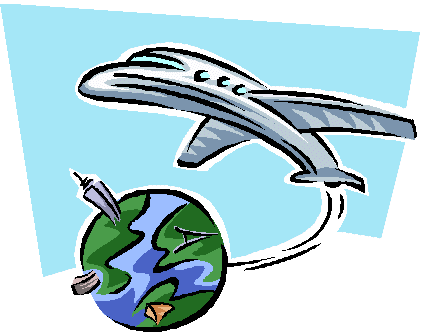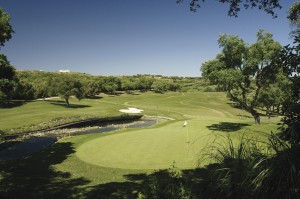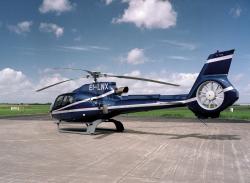After 35+ years of travel, I will admit to particularly enjoying the more convenient and comfortable ways of airline conveyance. This can be my preference for airline lounges, an exact seat on specific aircraft layout or routing with a preferred carrier. Therefore, the recent announcement of a new arrival and departure facility at Dublin Airport caught my attention.
Read more “Experience Effortless Travel Through Dublin Airport, Ireland”
Tag: Business Class
4 Tips To Plan Air Travel For Your Golf Trip [HOW TO GUIDE]

So you have made the golfing arrangements for your bucket-list golf trip to Scotland fourteen months in advance but how about your air travel details? All of the friends that said they could go have paid up the deposit and the dates are firmly inked on everyone’s calender. You have selected the most revered links courses and are looking forward to a pint or two in some of the famed watering holes. So what needs to be done next…other than wait patiently and practice your low ball?
Read more “4 Tips To Plan Air Travel For Your Golf Trip [HOW TO GUIDE]”
Travel Tips: What To Expect From Premium Air Travel

Virtually all of our clients need some form of air travel in conjunction with their PerryGolf land arrangements. While the economy cabin generally varies very little from one airline to another, the upgraded cabins can vary enormously and some expectation of what you are buying should be part of the purchase decision. Read more “Travel Tips: What To Expect From Premium Air Travel”
Hurry! Exclusive Airfare to Dublin Plus Ireland Golf Packages
Business class seating is undoubtedly a great way to arrive and depart from your PerryGolf trip. You may enjoy significant savings on the fare if you are willing to make a connection as compared to the nonstop option.
Interested in an Ireland Golf Packages? Below are some current examples for travel to Dublin, June 7 – 14, 2014: Read more “Hurry! Exclusive Airfare to Dublin Plus Ireland Golf Packages”
Around the Top 100 World Golf Trip
TRIP REPORT
Around the Top 100 World – Home to Augusta
Around the Top 100 World – Day 11 to Day 20 / Pinehurst to Cabo
Around the Top 100 World – Day 21 to Day 30 / Cabo to Kawana
Around the Top 100 World – Day 31 to Day 40 / Tokyo to Adelaide
Around the Top 100 World – Day 41 to Day 50 / Adelaide to Ayrshire
Around the Top 100 World – Day 51 to Day 60 / Ayrshire to Ascot
Around the Top 100 World – Day 61 to Day 70 / London to Long Island
Around the Top 100 World – Day 71 to Day 80 / New York to Ohio
Around the Top 100 World – Day 81 to Day 90 / Ohio to almost home
Around the Top 100 World – Day 91 to Day 100 and reflections
I have long thought that the ultimate travel experience is an around the world vacation…select your favorite and most desired destinations and over an extended period of time visit each of them as you circumnavigate the globe. A recent article reminded me of the sheer luxury of such a trip. While the article did not mention it, an RTW ticket is one of the bargains of luxury air travel if you fly in Business or First Class as the fares charged bare little resemblance to round trip fares. As an example you can secure an RTW Business Class ticket on Star Alliance for approximately $10,000 with multiple stops. First Class is $15,000.
As I was pondering the idea I was reminded of a friend, Bob McCoy who achieved, in many golfers eyes, the ultimate RTW golf trip. He played the Top 100 Golf Courses as selected by GOLF Magazine during 100 consecutive days. Yes, you read correctly. Some other points to consider if any reader wishes to match this journey;
- The journey must start on day 1 from your home…no head start!
- All air travel via commercially scheduled flights…leave the private jet in the hanger!
- All courses must be walked (caddie permitted)…but no carts!
Bob has kindly agreed to let me serialize his experience from the planning to the trip and I shall post over the weeks and months ahead. So here is Bob’s unedited story; (please note this is the first of eleven parts to this posting. You may view the condensed trip schedule with detail here.) You may want to subscribe to our blog to ensure you do not miss any of the installments.
——————-
100-in-100
Why?
How did the idea of playing the top 100 courses in the world in 100 consecutive days get started? In November 1988, while on a trip around the world to complete playing the Top 100, I began to wonder what to do for an encore. After completion of the Top 100 the obvious sense of accomplishment was mixed with a sense of disappointment that there were no more worlds to conquer. The fun of planning and executing the various trips was like a drug; once a high had been reached something more powerful had to be tried to hit an even higher high. Furthermore, I had a group of friends around the world that I wanted to visit again.
During the November 1988 trip, while being interviewed for an article in a Japanese golf magazine, I was asked what I was going to do after completing the Top 100. I casually said I was going to play them in 100 consecutive days. Subsequently I established a relationship with the famous golf writer Herbert Warren Wind. This very articulate and thoughtful man was kind enough to write in February 1994:
“…For all your entertaining accounts of the clubs and courses you visit each year, I find myself musing: This guy is not only a fountain of golf knowledge, he is one of the great travelers of all time. Planes may be cancelled, his precise meetings with old and new friends may need adjustment, and the courses he has arranged to play may be in terrible shape because of freakish weather, but this guy can adjust to any and all conditions. He is one of the great travelers of all time, like the hero of Jules Verne’s Around The World in Eighty Days.”

The other major influence was the evolution of the idea of writing a book. In 1987 I began to publish a brief newsletter called “The Odyssey,” which was sent to my friends as a way to keep them informed of my golf travels. Before 1987 the normal routine was to play a course with one, two, or three interesting members; have some refreshments afterward; quickly travel on to the next course; and then write thank you letters at the conclusion of the trip. However, because many of these people expressed a genuine interest in my travels I thought a brief yearly review might be of some interest.
The first “O” was a simple, crude, and totally candid four-page effort sent to about 100 friends. A much longer version was mailed out at the end of 1988, and a curious thing began to happen. I began to receive letters from strangers thanking me for creating the annual travelogue and saying they had received a photocopy from so and so. Well, I did not know the author of the letter and did not even know so and so.
This phenomenon was both pleasing and a source of concern. Obviously I was flattered that I was creating a document worthy of a written response from total strangers. On the other hand, I was concerned that I had lost control of the distribution. Because I did not want to offend in any way any of the kind people who had afforded me the opportunity to play their courses, I felt I had to be circumspect in what I said. Thus, the totally candid direction of future “O’s” was curtailed, with negative comments kept to a minimum.
The unsolicited letters keep rolling in and their content, plus encouragement from old friends, leads me to believe that I can make a contribution to golf by writing a book. The book will discuss all the World Top 100 courses, why they deserve to be on the list, and the noteworthy features of each course.
Thus, the reason for the 1997 trip was to create a challenge and to do something no one else has accomplished. However, it also developed into an in-depth field trip to gather information and impressions about each course. I asked the contact at each course to provide someone who was knowledgeable about the architectural evolution of the course. Many responded positively; a few could have cared less.
Creating The Itinerary
In May 1996 I purchased three large magnetic boards on which was written each of the 100 days. Also purchased were 100 magnets with a clip at the end to hold a piece of paper containing each course name. Thus it was easy to move the names around.
The most logical time to start the trip was late April. My business is seasonal, with the heavy work over by late April. Thus I was in the enviable position of being able to tell my clients that the office would be closed for 100 days without upsetting them. In fact, one company sent a gift of balls, gloves, and a hat.
Other considerations were Seminole’s closing for the summer on Mother’s Day (usually the second Sunday in May) and Augusta’s closing in mid-May. Because both hemispheres had to be visited, it was best to find the most temperate winter climate and that certainly was the southern hemisphere (palm trees in Sydney, Australia and Durban, South Africa).

At that point the question was the order of play. It was desirable to do as many as possible of the U.S. courses during their optimum weather season. This meant the southern part first and the northern part last. I also wanted to drive my own car as much as possible to avoid short-haul airplane flights and rental-car expense, including drop-off charges. As you can see, the schedule started with the southeastern part of the U.S. (including the Dominican Republic), followed by the rest of the southern and western parts of the country (including Mexico). San Francisco was a good overseas jumping off point to Japan, New Zealand,Australia, and South Africa.
Then it was on to the British Isles and Ireland, followed by Portugal, Spain, and France, and finally back in the U.S. to do the northern part of the country as well as Canada. Doing this part of the U.S. in July had the added benefit of missing the complications created by the many three- and four-day member-guest tournaments, which traditionally are held in June.
The next stage in creating the itinerary was to consult with Gordon Dalgleish (1992*) of PerryGolf (travel agent based in Atlanta, GA specializing in golf trips to Scotland and Ireland). Many hours were spent on the phone with Gordon consulting his travel-agency computer to locate airline flights that would link all the courses. With his help a viable program based on a British Airways round-the-world special business class fare was created. The cost of this ticket was $10,800. (The actual international ticket had so many pages with so many countries that the agent in Wellington New Zealand asked me where I was not going.) The domestic flights cost an additional $3,500. I was able to keep the airline cost down by using my own car for three major U.S sections of the trip.
In creating the schedule I programmed buffer days in anticipation of possible delays due to bad weather, late flights, or even missed flights. If these buffer days turned out not to be needed then there was also alternative flights picked out to get me to the next destination one day early. Obviously to play 100 courses in 100 days and travel around the world meant that two courses would have to be played in one day on several occasions. Geographically, there were plenty of possible opportunities. In the end 16 doubleheaders became part of the program.
Having already been to each course at least once, I knew how to get there and move on to the next course in the speediest manner possible. For instance, I knew the fastest way from San Lorenzo (near Faro, Portugal) to Valderrama (at Sotogrande, Spain) was to rent a car in Faro, drive five hours to Sotogrande, and finally leave the car at the Malaga airport, paying a substantial drop-off charge.
By late July 1996 the ideal schedule from my standpoint was developed.
The next stage was to determine how well my ideal schedule would fit with the 1997 schedule of the 100 courses involved. A personalized letter was written to my contact at each club. In most cases this was a friend of many years; in a few cases the letter went directly to the club. This was Plan A. Also enclosed were a standardized form and a reply envelope. Everyone was asked to check the 1996 club schedule and try to guess if the 1997 schedule might produce a significant conflict. An early starting time was also requested (preferably the first one of the day).
Over the next two months 92 specific and positive responses were received. For the eight no or too vague responses, Plan B was activated. That meant calling on friends who might know someone at the problem club or writing the club direct.
When moving my base of operation from New Jersey to Florida in late October I debated whether to bring the three bulky magnetic boards because the schedule seemed to be in good shape. Bringing the boards South proved to be a very wise decision.
In February 1997 reconfirming letters were sent to all concerned. At that point the schedule looked firm. However, as you will read, the deck had to be reshuffled twice more before lift-off day, and further revisions had to be made as the trip progressed. It was obvious at the outset of the project that flexibility was the magic word in planning and executing the trip. At this point the single most valuable piece of equipment was the fax.
I am a firm believer in spending as much time as possible on the planning stage of a trip. I have learned the hard way that no matter how much you try to anticipate every eventuality there will always be some unexpected hurdle or hurdles. The goal is to keep the unexpected to the absolute minimum. The final itinerary for the trip was a single-spaced seven-page document containing 150 names of individuals along with 250 phone and fax numbers. PerryGolf, used as the contact point, was extremely helpful in coping with the changes that came up during the trip.
Course Access

As most of you know, just getting on some of the Top 100 courses is almost impossible, to say nothing about trying for a specific day and a specific hour. Having friends all over the world made my trip a possibility. Unless otherwise noted in the blow-by-blow account of the trip, all the course played are private. On 45 courses you must play with a member. On another 30 private courses you can play at certain times without a member (mostly in the U.K. and Australia) but need a proper introduction, such as being a member of a private club. On modern-day real-estate related courses you have to play with a member. There also are eight resort courses and three public-access courses. Finally, there is one course (Shadow Creek) that falls into the “other” category (basically you must be a high roller or friend of the owner) (subsequently available for $1,000 greens fee).
Possible Publicity
In the early stages of planning the trip I envisioned all sorts of possible related activities. To defray the expense of the trip I thought of corporate sponsorship such as Titleist/Foot Joy/Cobra Golf (clubs, balls, gloves, shoes, socks, and bag), AT&T (demonstration of worldwide communication capability, including nightly updates on the Internet), and an airline such as British Air. Other possibilities were a fund-raising program for the Multiple Sclerosis Society (with donors paying so much per mile traveled) or a contest to guess the actual itinerary.
All these ideas quickly evaporated because of the need to respect the privacy of all the clubs involved. A few of them wanted absolutely no publicity. Sports Illustrated contacted me in February expressing a desire to run a three-page article (including a map) to be published in April. Golf magazine also thought about running articles during each month of the trip. I had to ask both to hold off until the trip was concluded. Thus the trip was conducted in an inconspicuous fashion. The privacy issue also meant the trip could not be mentioned in the 1996 “O.”
Going on one airline exclusively made no sense; the optimum flight had to be chosen in all instances because of the need for speed. I had to take the most direct flight possible and not be tied down to a hub-city connection just to stay on one airline.
Traveling Companion
I have learned over the years that traveling alone on an extended trip is the only way to go because problems rise exponentially with the addition of each person. However, because the book was such an integral part of the trip I asked someone to join me. I wanted this person to act as another set of eyes and help write up the key aspects of the course played that day as we traveled to the next site. I thought I had such a person (63-year-old gentleman from overseas), and he did accompany me on the early part of the trip. Unfortunately, the pace was too fast and my friend retired from the fray after the first 20 courses.
Actually my first choice for a traveling companion had been Dan Turner (1992) who had been doing yeomen service as a researcher for the book. Dan is the head of the Civil and Environmental Engineering Department at the University of Alabama. In December 1996 Dan’s new boss decided he was indispensable at work and thus was not free to spend 100 consecutive days away from the campus. Dan did join my traveling companion and me on the first few days of the trip. Then he joined me on the Monterey Peninsula, in Ireland and Scotland, and during the concluding 10 days. During these periods we accomplished a great deal of work, and it is a shame that Dan was not along for the entire trip.
Wardrobe
A few years ago I decided to simplify my life by traveling only with white golf shirts. This eliminates all agonizing color-coordination decisions while packing and on the morning of each golf day. With the need to do my own laundry without having conquered the iron, I have discovered all-cotton golf shirts do not come out of the dryer wrinkle-free. To supplement my current supply of white golf shirts for the trip I purchased a dozen Pickering 60% cotton/40% polyester white shirts. Following the trip my closet now contains a lifetime supply of white golf shirts.
I also purchased four drip-dry dress shirts, as well as two pairs of blue long pants and two pairs of blue short pants made of a new type of microfiber that was light in weight, washable, permanent-press, and wrinkle-free.
I also packed two pairs of middle weight blue golf slacks; one pair of blue corduroy slacks; one pair of gray dress slacks; one blue blazer; four ties; two blue cashmere sweaters; one gray Gortex-lined sweater; a 14-day supply of socks and underwear; and normal toiletry items supplemented by vitamins, Kaopectate, and Lomotal.

Luggage
How do you pack to circumnavigate the globe starting in Atlanta, Georgia, and ending in New Jersey 55 days later and encountering both spring, summer, and moderate early-winter weather? It meant one heavy central piece of luggage on rollers. How heavy would this suitcase become? At check-in an attendant attached an extra tag that said “HEAVY-Bend your knees”; the weight was listed at 28 kg (61.7 lb.).
Gordon produced a reasonably light and sturdy golf travel bag, also with rollers. Because the bag was not tall enough for my standard long putter one with a collapsible shaft had to be purchased. The putter head was ugly, but the collapsible shaft made it worthwhile.
My carry-on bag was bulky and heavy. To record as many thoughts as possible during the trip I purchased a Toshiba laptop computer that operated on all electrical systems. Because the battery is only good for 90 minutes of usage per full charge and there were going to be some ten-hour flights, two extra batteries and a battery charger kit were needed. This whole system added considerable weight to the carry-on bag, but it was necessary.
A portable printer was purchased, but it and the related supplies such as paper proved to be too bulky and too heavy. Also purchased (from Radio Shack) were two packages of international adapters, one for electrical outlets and the other for telephone outlets.
The fourth piece of luggage was a lightweight hanging bag for a sport coat and slacks to avoid wrinkling these items by packing them tightly in the big suitcase. I also purchased a small two-pocket zippered travel purse to hold my passport, travelers’ checks, airplane tickets, regular wallet, some bank checks, and a minicalculator. This purse was never out of my sight and went into the golf bag while on the course.
Because it immediately became apparent that the carry-on bag was really heavy I bought a set of detachable wheels to roll the bag on and off airplanes and down long airport corridors. However, it quickly became clear that it was impossible for one person to roll more than two pieces of bulky luggage at the same time. Thus, the detachable wheels were abandoned, and I put the carry-on bag back on my shoulder. Actually, moving the four pieces simulanteously was not a big problem except in Japan.
One or more cameras would have been desirable additions. However, not only were weight and space considerations in the decision note to include them, but so were the lack of freedom to take pictures at appropriate times. The priorities were to play golf and write down observations. I have found that doing these two tasks makes it impossible to take pictures too while maintaining a reasonable pace of play. The choice is to take notes or to snap pictures, and I opt for note taking. In this regard 30 pocket-sized spiral notepads were purchased. One question was which spiral location was best — on the side or on top. Extensive field testing indicated that the clear choice was spirals at the top for ease of taking out and replacing in the right-hand back pants pocket.
Physical Conditioning Program
I am not a physical fitness freak, but I did not want to have the trip fail because some part of my body fell to pieces. That meant a fairly serious exercise program had to be performed on a 58-year-old body. Actually I have been on a semi-regular exercise program for the past few years, so I just became more dedicated to following it at least three times a week starting in the summer of 1996. The program consists of extensive stretching, 10 to 15 minutes on a stair climber, 10 to 15 minutes on a stationary bike, and 20 to 25 minutes on a treadmill whose elevation can be adjusted. I also spent the winter season carrying my bag in order to increase my stamina. Clearly the program worked because no body part failed, even for one day. I certainly would not characterize myself as an “iron man,” but for at least 100 days of my life I can modestly put myself in that category.
McCoy Power Reports (MPR)
Most of my friends think I am fully retired, but in fact I run a successful business, McCoy Power Reports (MPR). I publish nine formal reports a year, plus some interim reports, on worldwide market shares for electric power generating equipment and services. It is a $100 billion-a-year industry, and my paying customer base includes such companies as GE, Siemens (Germany), ABB (Switzerland), GEC Alsthom (France and England), and Mitsubishi (Japan).
In early April the following notice was sent to all my customers:
“Please be advised that I will be out of the country from late April through early August. Therefore, the MPR office will be closed at the end of the day on Friday April 25 and will not reopen until Thursday August 7. There will be no way that I can respond to any requests during that time period. Thus, if you have any special requests please contact me by April 25.” Not only were there no complaints, but no one canceled. In fact, during the three weeks after reopening, three new companies signed up for the full subscription service. Maybe I should go away for 100 days every year.
Luck
Despite a full year of planning and preparation, I was going to need a lot of luck for the trip to be successful. Before blast-off I received a card and good luck charm from my older daughter Elizabeth. The card said “Enclosed is a good luck rock for your journey! May your goals and dreams be accomplished. May this green rock, illustrating different geological ages, bring you luck and happiness while you travel. The rock is from Alaska and Canada – the Tatshenshini River. It traveled a long way to bring you luck. Don’t forget to put it in your golf bag.”
I did as instructed, but then forgot about the rock. Fortunately I cleaned out the golf bag in Atlanta just before embarking upon 53 days of flying. It was then that I discovered the rock and realized why the trip had been going so well so far. For the rest of the trip, every time I thought about how lucky I was that everything was going so well I also thought of the rock. And these thoughts occurred daily. On the eighteen hundredth green at Merion I took out the lucky rock and had my younger daughter Jane take a picture of me kissing it.
Miscellaneous
There were several day-to-day items to cover before lift-off. To cover the normal monthly bills, organizations such as the electric and phone companies had to be sent enough funds to cover at least four months’ worth of charges. The June installment to the Internal Revenue Service was prepaid, and the credit-card company received a substantial advance payment to avoid not exceeding my credit limit and thus being refused credit in Adelaide, Australia.
Ground Rules
As the first person to attempt playing the Top 100 in a given number of days, I have the discretion to determine the ground rules for anyone who wants to play them in fewer than 100 days. These ground rules are:
- 1. Start from your official residence on day one.
- 2. Fly commercially.
- 3. Walk all 1,800 holes.
TO BE CONTINUED
About the Author: Gordon Dalgleish is the Co-Founding Director of PerryGolf, the leading provider of international golf vacations. You can find him on Google+
